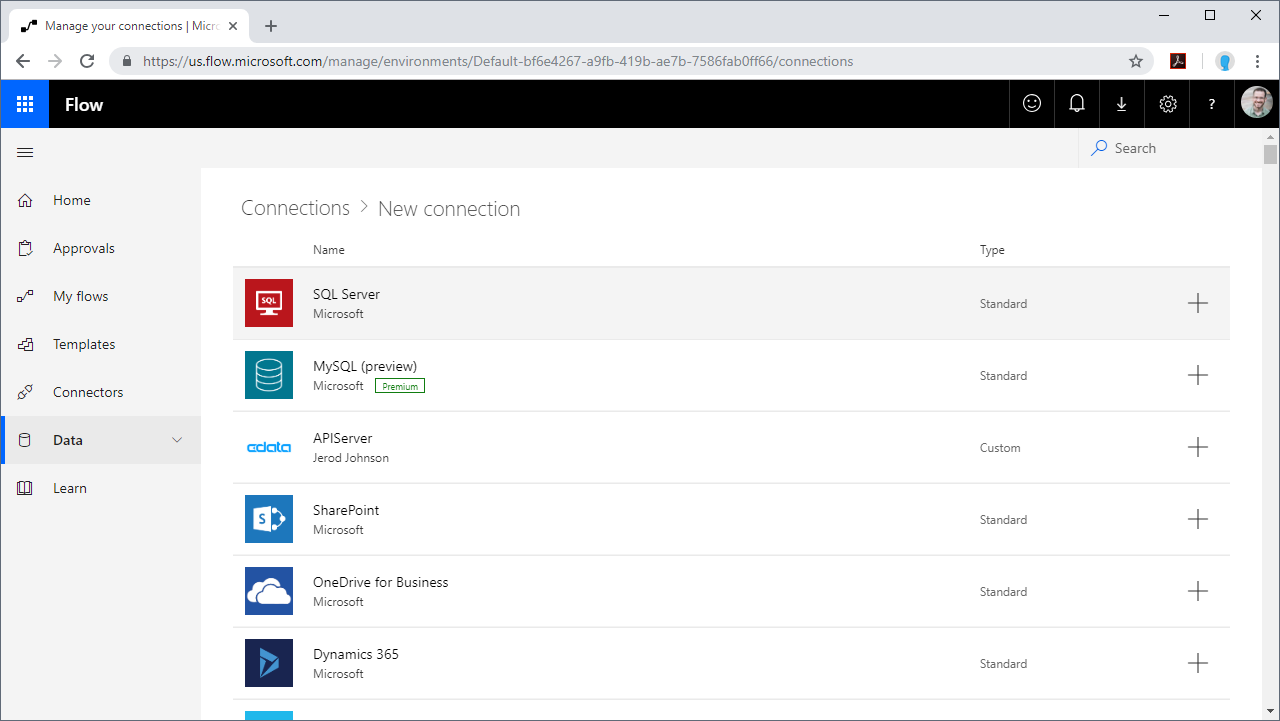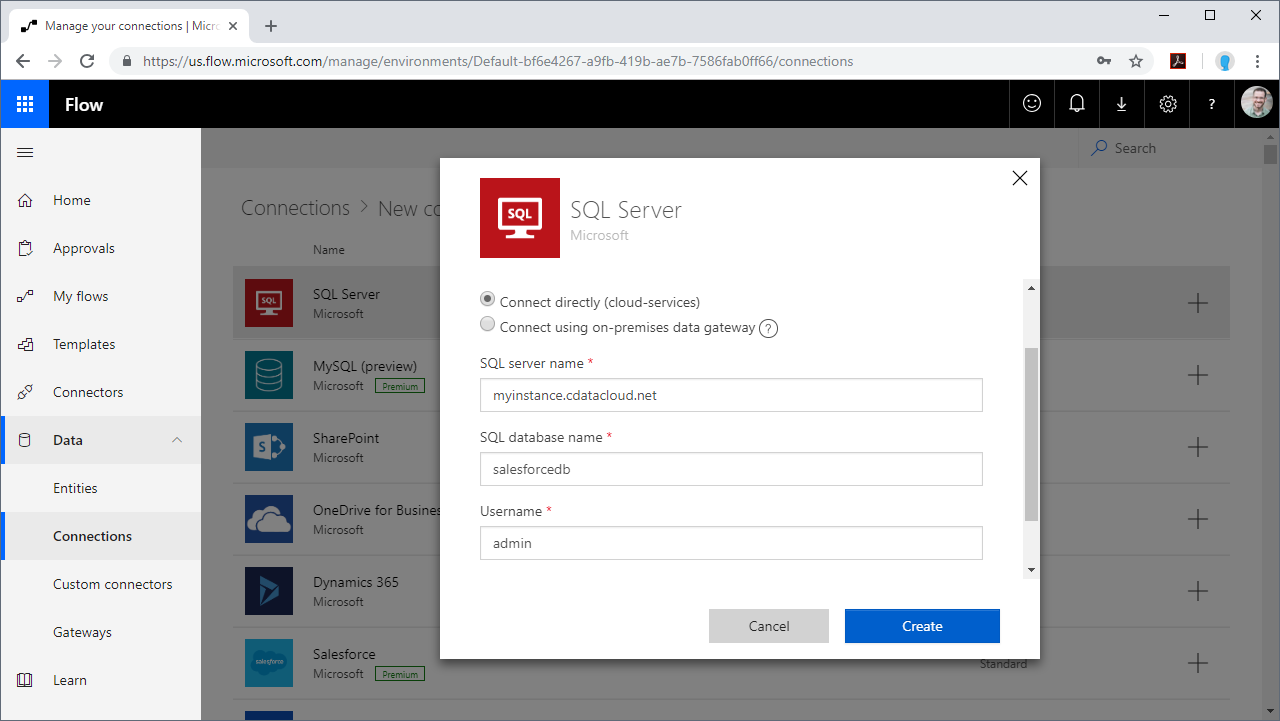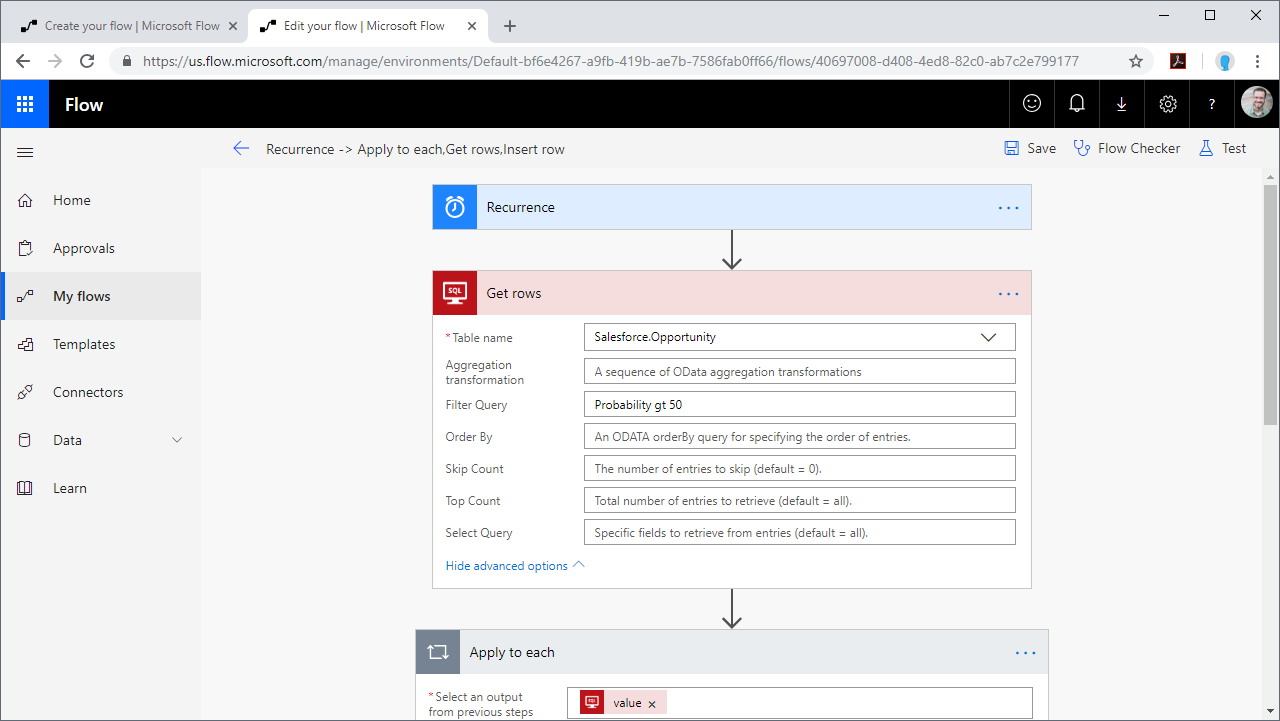Discover how a bimodal integration strategy can address the major data management challenges facing your organization today.
Get the Report →Integrate LDAP Objects into Automated Tasks with Power Automate
Use CData Connect Server to create a virtual SQL Server database for LDAP objects and integrate live LDAP objects into your Power Automate (Microsoft Flow) tasks.
Power Automate (Microsoft Flow) is an online service that automates events (known as workflows) across the most common apps and services. When paired with CData Connect Server, you get instant, cloud-to-cloud access to LDAP objects for visualizations, dashboards, and more. This article shows how to connect to Connect Server from Power Automate and integrate live LDAP objects into your workflows and tasks.
CData Connect Server provides a pure SQL interface for LDAP, allowing you to easily integrate with live LDAP objects in Power Automate — without replicating the data. CData Connect Server looks exactly like a SQL Server database to Power Automate and uses optimized data processing out of the box to push all supported SQL operations (filters, JOINs, etc) directly to LDAP, leveraging server-side processing to quickly return LDAP objects.
Create a Virtual SQL Database for LDAP Objects
CData Connect Server uses a straightforward, point-and-click interface to connect to data sources and generate APIs.
- Login to Connect Server and click Connections.
![Adding a connection]()
- Select "LDAP" from Available Data Sources.
-
Enter the necessary authentication properties to connect to LDAP.
To establish a connection, the following properties under the Authentication section must be provided:
- Valid User and Password credentials (e.g., Domain\BobF or cn=Bob F,ou=Employees,dc=Domain).
- Server information, including the IP or host name of the Server, as well as the Port.
BaseDN: This will limit the scope of LDAP searches to the height of the distinguished name provided.
Note: Specifying a narrow BaseDN may greatly increase performance; for example, cn=users,dc=domain will only return results contained within cn=users and its children.
![Configuring a connection (SQL Server is shown).]()
- Click Save Changes
- Click Privileges -> Add and add the new user (or an existing user) with the appropriate permissions.
Connecting to CData Connect Server
To use Connect Server to integrate LDAP objects into your Power Automate tasks, you need a new SQL Server connection:
- Log in to Power Automate
- Click Data -> Connections -> New connection
- Select SQL Server
![Creating a new SQL Server Connection]()
- In the connection wizard:
- Set Authentication Type to "SQL Server Authentication"
- Set SQL server name to the address of your Connect Server instance (connect_server_url)
- Set SQL database name to the name of the virtual LDAP database you created earlier (like ldapdb)
- Set the Username and Password and click Create
![Connecting to Connect Server]()
Integrating LDAP Objects into Power Automate Tasks
With the connection to Connect Server configured, you are ready to integrate live LDAP objects into your Power Automate tasks.
- Log in to Power Automate
- Click My flows -> New and choose to create the flow from blank or template
- Add (or configure) a SQL Server action (like Get rows) and configure the action to connect to your Connect Server connection
- Select a Table to work with (from the drop-down menu) and configure any advanced options (like filters, orders, etc)
![Getting LDAP "Rows"]()
- Configure any actions to follow and test, then save the flow
SQL Access to LDAP Objects from Applications
Now you have a direct connection to live LDAP objects from Power Automate tasks. You can create more connections and workflows to drive business — all without replicating LDAP objects.
To get SQL data access to 200+ SaaS, Big Data, and NoSQL sources directly from your applications, see the CData Connect Server.
Related Power Automate Articles
This article walks through using CData Connect Server with Power Automate (Online). Check out our other articles for more ways to work with Power Automate Desktop:











